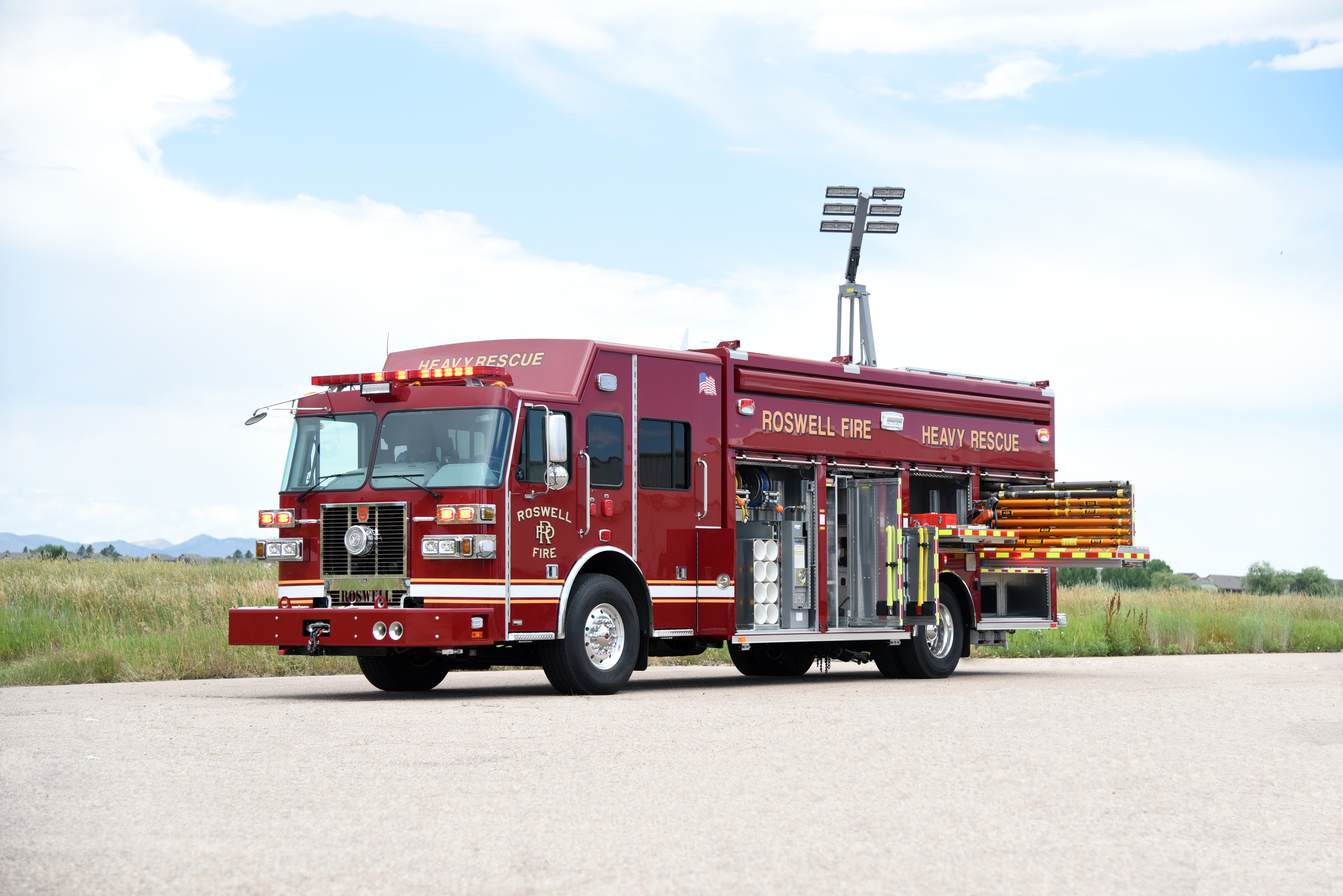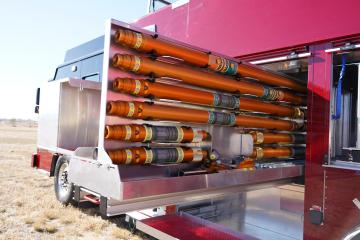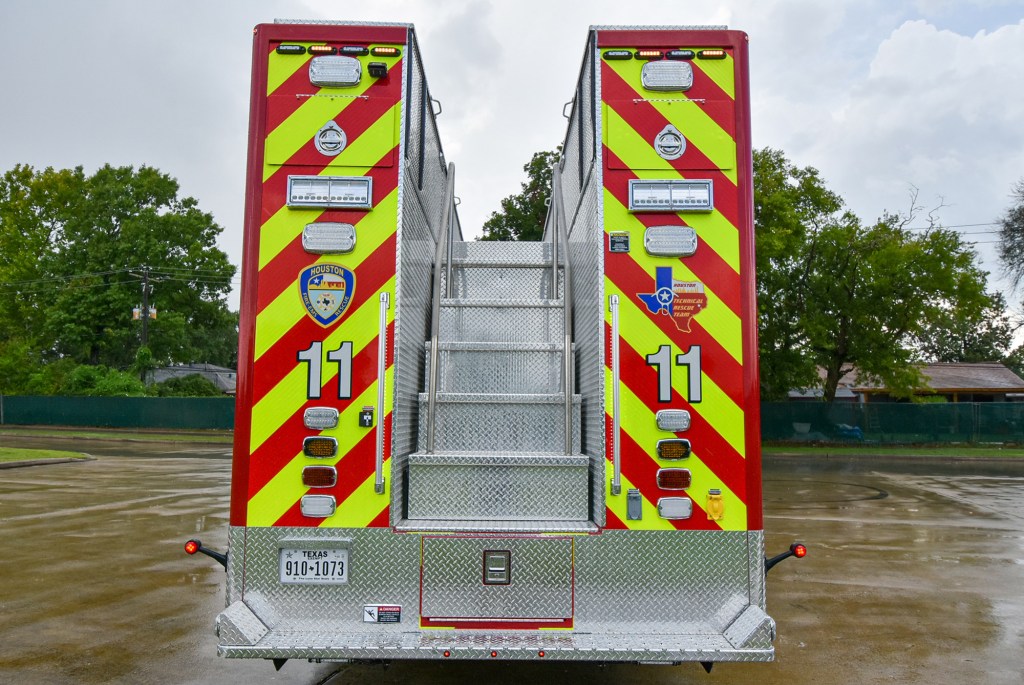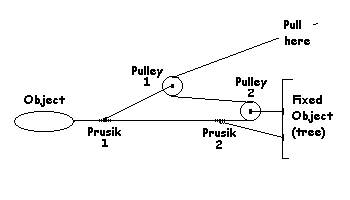Applying a Prusik cord to ropes during rope rescue can be a frustrating endeavor if you are not proficient at tying them. Lack of proficiency will dramatically slow down your operations when changing over from lowering to hauling or when building up your mechanical advantage systems. Having a victim and/or rescuer hanging on rope while waiting on you to tie the Prusik can feel like an eternity unless you practice and become fast and proficient.
An easy way to tie the Prusik onto a rope is to take the barrel knot of your Prusik and lay it on top of the rope you want to tie it onto. Roll the barrel knot around the rope 3 times, keeping the knot in contact with the rope the entire time. Once you complete three full wraps, take the barrel knot and offset it in one direction so it is not in the center. This will prevent the knot from being in direct contact with your carabiner or other attached device once it is dressed and set.
Once you’ve offset the knot, you can pull tension to tighten the loops onto the rope, making sure the loops are not crossing over one another and each loop is in direct contact with the rope all the way around. This will ensure you are getting maximal rope grab once the Prusik is set and loaded.
When adjusting the position of the Prusik on the rope, be sure to loosen it first before repositioning. Loosening it will make it easier to move as well as reduce the chance of burning the rope fibers of your main rope as well as the Prusik cord itself by reducing the amount of friction applied during repositioning.
If you are using the Prusik as a rope grab implement in a mechanical advantage system with a carabiner and pulley attached, an easy way to advance the Prusik to extend the system is to first loosen the Prusik then pull on the carabiner to advance your system while sliding the Prusik along the rope. Once it is advanced to the desired position, make sure the loops are still dressed properly and you can resume operations.
When using paired, or tandem, Prusiks within your rope system, make sure they are properly sized and equally grabbing the rope. If they are not properly sized, only one Prusik will be assuming the load while the other is adding no additional benefit. A properly sized pair of Prusiks should have about 2-3 inches in between them when they are properly set and loaded with both of them grabbing the rope.
We hope these tips on Prusik use help you in your rope rescue operations.
Building Collapse
Houston Fire Department’s Trailer 11
Check out Houston Fire Department’s new Trailer 11 purchased from Metro Fire Apparatus Specialists, Inc. It’s packed for of Paratech equipment with room for more!

Houston Fire Department’s Trailer 11
Check out Houston Fire Department’s new Trailer 11 purchased from Metro Fire Apparatus Specialists, Inc. Check out the pictures below and make sure you follow the social media pages from Metro Fire Apparatus Specialists.
Overall Pictures
Compartments Pictures
Rear Pictures
Rope Rescue
Low Angle Rescue
Low Angle Rescue
Moving a patient up an embankment back to the roadway could be as simple as guiding them up. However, depending on the angle of the embankment, weather and soil conditions the safest method is with a stokes basket attached to a low angle rope hauling system. Paratech Monopod being used at a recent incident in Hunterdon County NJ.
Z-Drag
Another easy to rig low angle system is a Z-Drag.
Rescue Rigs
Roswell GA Heavy Rescue Sutphen SVI-Trucks
This apparatus comes equipped with a Command Light Knight 2 series light tower, Carefree Mirage Lateral Arm Patio Awning, Resolve Space Saver fill station, Cab/Body Walk-Through Connection and packed full of Paratech Struts!

Roswell, GA Heavy Rescue
Roswell, GA Fire Rescue had a new heavy rescue built with a 22′ aluminum SVI-body mounted on a 20″ raised roof Sutphen Monarch chassis with a Cummins X12 500 HP engine. This apparatus comes equipped with a Command Light Knight 2 series light tower, Carefree Mirage Lateral Arm Patio Awning, Resolve Space Saver fill station, Cab/Body Walk-Through Connection and packed full of Paratech Struts!
- Features
- Specifications
- Drawings




















